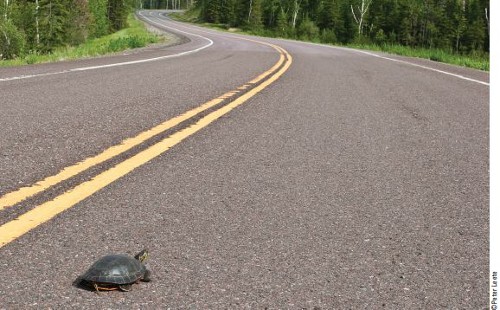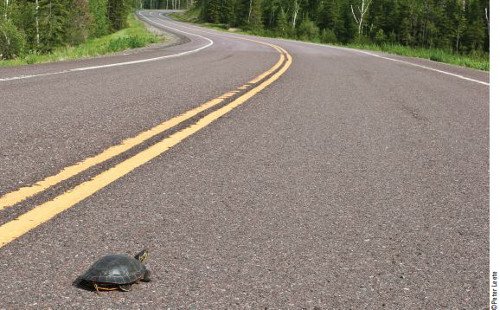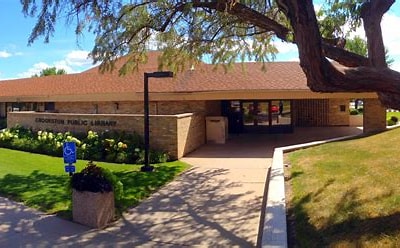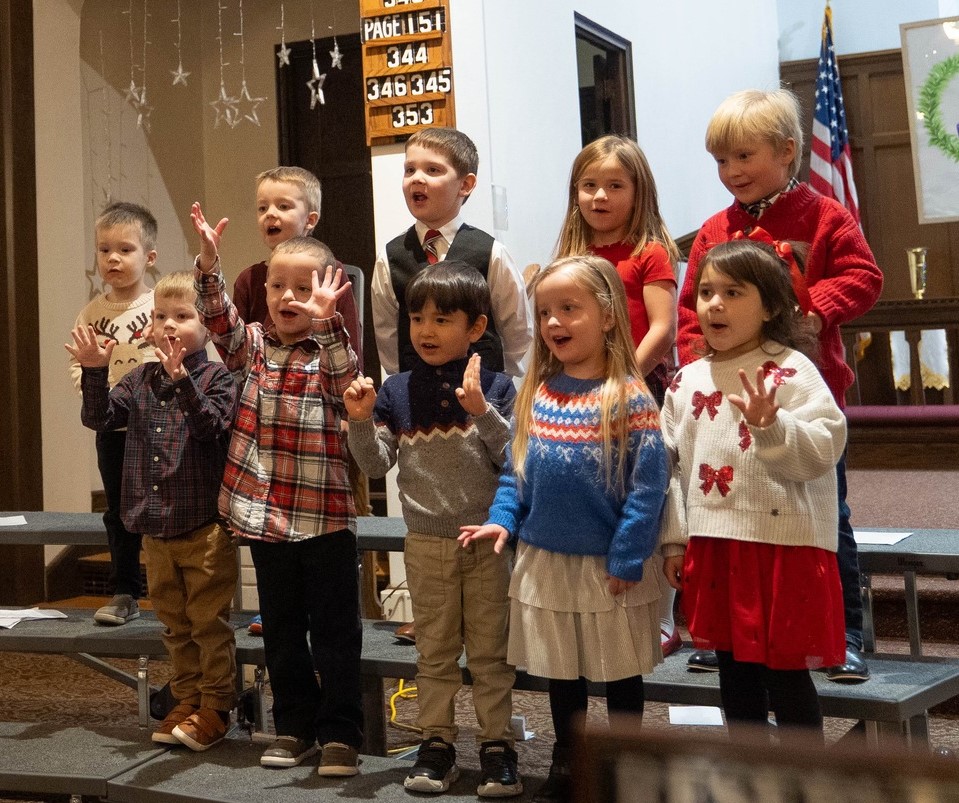Turtles often cross roadways in late May into June for nesting locations. It’s best to let them cross on their own, but if they are in danger, pick them up along the midpoint of their shell edge and move them in the direction they were heading. The Minnesota Department of Transportation has released more information below.
Troubled Turtle Times
Although pre-dating dinosaurs by several million years, turtles everywhere are fast disappearing today. The “hide in my shell and wait it out” strategy that has enabled turtles to weather the geologic changes leading to the extinction of countless other species, however, has proven of little use in surviving the peril posed by fast moving trucks and cars.
Roadway mortality, in fact, is believed to be a major factor in turtle population declines throughout the United States. Helping these typically inoffensive animals safely across roads is therefore an important and valuable contribution to the preservation of North America’s turtles. Turtles injured while trying to cross the road may be taken to your nearest permitted wildlife rehabilitator.
Why Turtles Cross Roads?
Unlike the infamous chicken of many riddles, turtles cross roads not just to get to the other side but because turtles actually have someplace to go. In Minnesota, where all turtles are mainly aquatic, overland journeys usually occur: (1) in connection with seasonal movements between different wetland habitats, (2) during the annual early summer nesting migration of egg laden females, or (3) when newly hatched youngsters seek out the backwaters and ponds that will serve as their permanent home. Turtles can travel many miles during a single year, and may even be found far from water; this is no need for concern. Turtles crossing roads in late-May and June are often moving to familiar nesting locations.
Giving Turtles A Hand
Helping turtles safely across roads, particularly females with eggs, is vital to the preservation of regional populations. The following important points should be remembered if this activity is to remain an effective turtle conservation tool.
- Don’t put yourself or others in danger. Simply pulling off the road and turning on your hazard lights may alert other drivers to slow down. Be aware of your surroundings and traffic.
- Avoid Excessive Handling. While wanting to inspect turtles closely is understandable, excessive handling can disrupt normal behavior. Prolonged examination of turtles should therefore be limited to only one or two individuals of each species.
- Allow Unassisted Road Crossings. When turtles can safely cross roads unaided due to a lack of oncoming traffic allow them to do so. Observe from a distance and avoid rapid movements, as doing otherwise will often cause turtles to change direction, stop, or seek shelter within their shells.
- Handle Turtles Gently. If necessary to pick them up, all turtles except Snappers and Softshells (“leatherbacks” – see below for more information on these species that may bite when picked up) should be grasped gently along the shell edge near the mid-point of the body. Please be advised that many turtles empty their bladder when lifted off the ground, so be careful not to drop them if they should suddenly expel water.
- Maintain Direction of Travel. Always move turtles in the same direction they were traveling in when encountered. Turtles should always be moved across roadways in as direct a line as possible. It may seem helpful to “assist” the turtle in its journey by moving them to a nearby waterbody, but it is important to remember the phrase, “If you care, leave it there.”
- Document Your Find. Help us document turtle crossing and mortality areas by participating in the Minnesota Turtle Crossing Tally & Count Project PDF (link is external).
Blanding’s and Wood Turtles
Despite its threatened species status, the Blanding’s Turtle is still fairly abundant in some areas of Minnesota (such as the Anoka Sand Plain Subsection), however few observations of young or hatchling turtles exist (most observations are of large adult turtles). Blanding’s Turtle populations face significant threats to long-term survival such as habitat loss, degradation and fragmentation, road mortality, and potentially climate change. The state threatened Wood Turtle is not doing as well in Minnesota due in large part to loss and degradation of habitat. Both species remain legally protected throughout all of Minnesota and technically may not be handled or possessed without a special permit. However, in life or death situations we recommend moving Blanding’s and Wood Turtles a few feet off the road to safety. Unfortunately, these rare turtles are sometimes illegally collected for personal pets. To ensure that your good intentions are clear to law enforcement officers, or other that may be watching, do NOT bring the turtle into an automobile or place in a container, even temporarily, while helping the turtle out of harm’s way. When possible, document your encounter for these threatened species with a couple photographs, be sure to note the date and your location to the best of your ability (use nearest house address, cross-street, etc.). Please e-mail or call your regional Nongame Wildlife Program staff to report observations. Learn more about Minnesota’s turtle diversity.
What About Snappers and Softshells
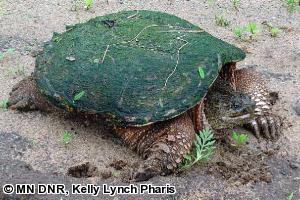 Although many turtles attempt to bite when restrained, Snapping Turtles and Spiny Softshells (often referred to as “leatherbacks”) are particularly aggressive, surprisingly quick and will bite with little provocation. In addition, exceptionally long necks enable Snappers and Softshells to reach around and deliver painful bites if picked up by the sides of the shell like other turtles.
Although many turtles attempt to bite when restrained, Snapping Turtles and Spiny Softshells (often referred to as “leatherbacks”) are particularly aggressive, surprisingly quick and will bite with little provocation. In addition, exceptionally long necks enable Snappers and Softshells to reach around and deliver painful bites if picked up by the sides of the shell like other turtles.
For these reasons it is recommended that only experienced handlers ever attempt to lift Snapping Turtles or Softshells clear of the ground. Snapping Turtles should NEVER be picked up by the tail! This can damage the Snapping Turtles spinal cord. Grabbing an aggressive turtle by one rear leg while supporting the turtle from below with your other hand is safe for both you and the turtle. Others wishing to assist Snappers or Softshells cross roads are advised to use branches, broomsticks, snow shovels, or similar objects to prod the animals along from behind. If bitten, such objects may also be used to drag the turtles to roadway edges.
Citizen Science
Minnesota Turtle Crossing Tally & Count PDF (link is external), HerpMapper.
Recommended Resources
For additional information on Blanding’s Turtle and other turtles in Minnesota or elsewhere in the United States the following resources are highly recommended.
Protect Our Turtles – Informational Poster PDF, Minnesota Dept. of Natural Resources.
Roadways and Turtles, Solutions for Safety PDF, Minnesota Dept. of Natural Resources.
Amphibians & Reptiles Native to Minnesota, Barney Oldfield and John Moriarty, 1994. University of Minnesota Press.
Turtles of the United States and Canada, Carl Ernst and Jeffrey Lovich, 2009. The Johns Hopkins University Press.

